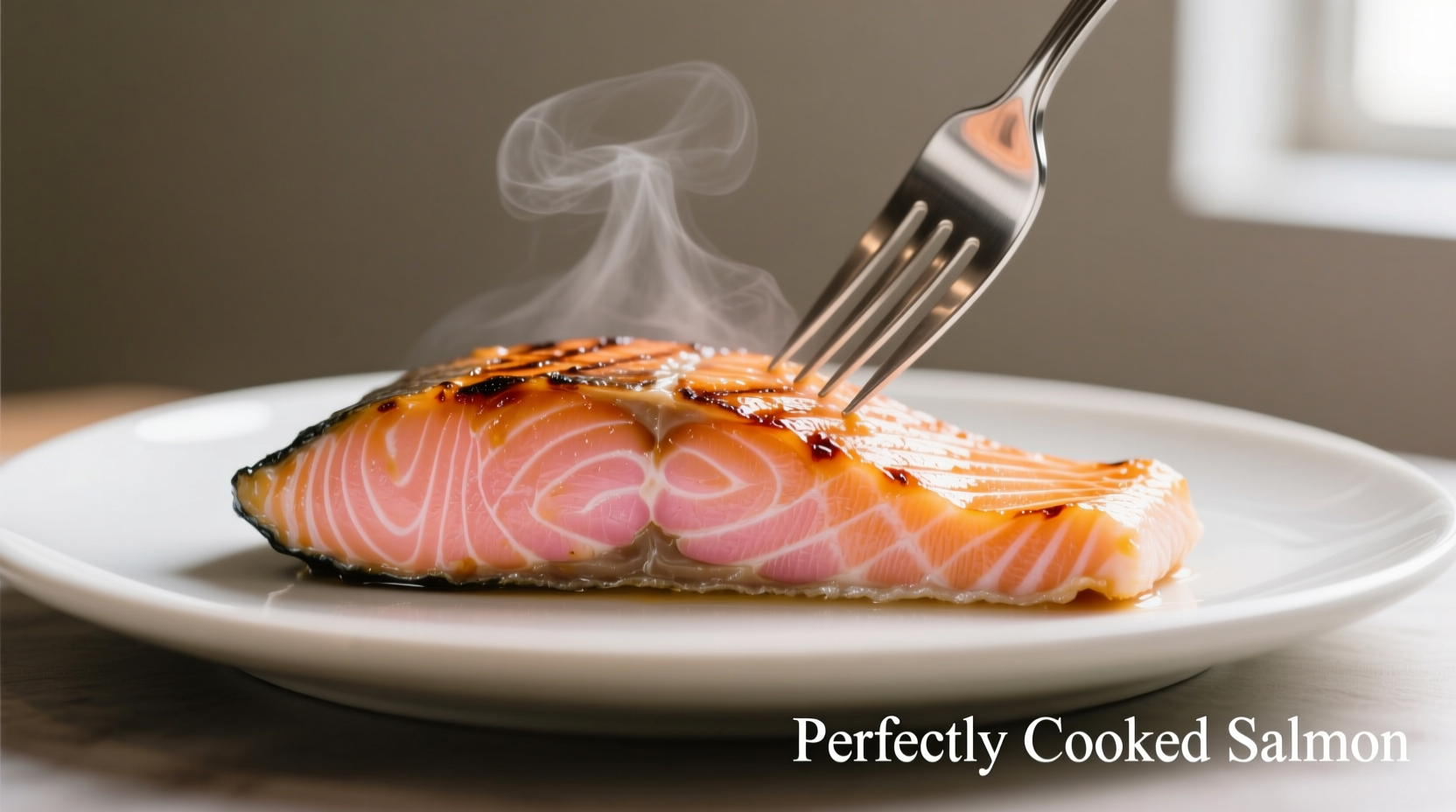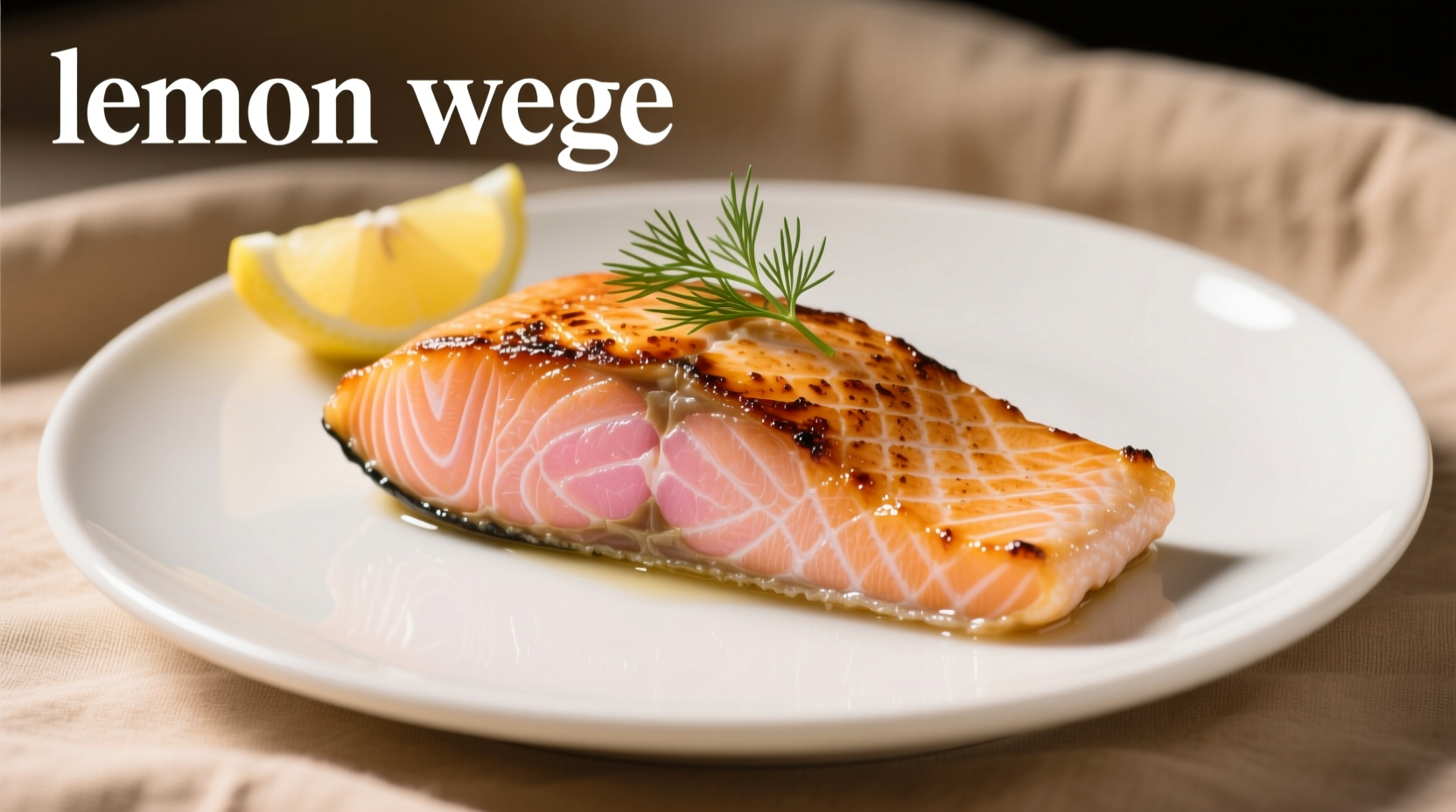Have you ever cut into salmon only to find it's still raw in the middle or dried out beyond saving? You're not alone. Mastering the visual cues for perfectly cooked salmon separates good home cooks from great ones. This guide reveals exactly what properly cooked salmon looks like across different cooking methods, so you can consistently achieve restaurant-quality results without guesswork.
Understanding Salmon's Transformation During Cooking
Salmon undergoes remarkable physical changes as it cooks due to protein denaturation. When raw, salmon appears translucent because light passes through the tightly coiled protein structures. As heat is applied, these proteins unwind and bond together, expelling moisture and becoming opaque. This scientific process creates the visual indicators we rely on to determine doneness.
The FDA and USDA recommend cooking salmon to a minimum internal temperature of 145°F (63°C) for food safety. However, many professional chefs pull salmon from heat at 135-140°F (57-60°C) because residual cooking continues to raise the temperature. Understanding both temperature guidelines and visual cues gives you complete control over your cooking process.
Key Visual Indicators of Perfectly Cooked Salmon
While a thermometer provides the most accurate measurement, visual cues help you assess doneness without interrupting the cooking process. Here's what to look for at each stage:
| Cooking Stage | Color Appearance | Texture Characteristics | Surface Indicators |
|---|---|---|---|
| Raw | Bright translucent orange-red | Firm but yielding to pressure | Moist surface with no dry spots |
| Perfectly Cooked | Opaque pink throughout (no translucency) | Flakes easily with fork but remains moist | Light golden crust on cooked side, minimal albumin |
| Overcooked | Pale, almost white appearance | Dry, tough, difficult to flake | Excessive white albumin, dry surface |
Practical Testing Methods for Home Cooks
Professional chefs use multiple sensory inputs to determine salmon doneness. Here's how to apply these techniques at home:
The Fork Test: Your Most Reliable Visual Indicator
Gently insert a fork into the thickest part of the salmon at a 45-degree angle. If properly cooked, the flesh should flake easily but still appear moist. The flakes should separate cleanly without resistance. Undercooked salmon will resist flaking and appear translucent, while overcooked salmon will be dry and separate too easily.
Color Transformation Guide
Watch for these color progression stages as salmon cooks:
- Raw: Bright orange-red with translucent appearance
- Medium-Rare: Slightly opaque pink on outside, translucent center (120-125°F)
- Medium: Mostly opaque with slight translucency in center (130-135°F)
- Medium-Well: Fully opaque pink throughout (140-145°F)
- Well-Done: Pale pink to white with dry appearance (150°F+)
According to the U.S. Food and Drug Administration, fish is safe to eat when it reaches 145°F internally or becomes opaque and flakes easily with a fork.
Cooking Method-Specific Visual Cues
Different cooking methods produce distinct visual indicators. Recognizing these helps you adjust your assessment accordingly.
Pan-Seared Salmon Visual Indicators
When pan-searing, look for:
- A golden-brown crust forming on the cooked side within 3-4 minutes
- Translucency disappearing from the bottom up as it cooks
- Minimal white albumin (the coagulated protein) appearing near edges
- Flesh separating easily from the pan when properly seared

Oven-Baked Salmon Visual Indicators
For oven-baked salmon, watch for:
- Uniform opaque color throughout the thickest part
- Slight curling at the edges indicating completion
- Moist surface without excessive drying or browning
- Flesh that springs back slightly when pressed gently
Avoiding Common Cooking Mistakes
Even experienced cooks make these visual assessment errors:
Mistake #1: Relying Solely on Color
Color alone can be misleading, especially with farmed versus wild salmon. Wild salmon tends to be deeper red when raw and may retain a slightly deeper pink when cooked. Focus on the transition from translucent to opaque rather than specific color shades.
Mistake #2: Ignoring Thickness Variations
Salmon fillets often have tapered ends that cook faster than the thick center. The USDA Food Safety and Inspection Service recommends cooking fish approximately 10 minutes per inch of thickness, turning halfway through. Visually check the thickest part for doneness.
Mistake #3: Overlooking the Albumin Factor
The appearance of white albumin (the white, opaque substance) indicates proteins are coagulating. While some albumin is normal, excessive amounts signal the salmon is nearing overcooking. To minimize albumin, try brining your salmon or starting with cold fillets.
Temperature Guide for Different Doneness Preferences
Understanding the relationship between temperature and visual appearance gives you precise control:
- 110-120°F: Raw center, translucent appearance (sashimi-grade only)
- 125-130°F: Medium-rare, center slightly translucent (safe for high-quality salmon)
- 135-140°F: Medium, mostly opaque with moist texture (chef's recommendation)
- 145°F: Medium-well, fully opaque throughout (USDA minimum safe temperature)
- 150°F+: Well-done, dry and flaky with pale color (generally overcooked)
Remember that salmon continues cooking after removal from heat due to residual heat. For best results, remove salmon from heat when it's 5°F below your target temperature.
Troubleshooting Visual Indicators
Encountering issues with your cooked salmon? Here's how to interpret and correct common visual problems:
Problem: Salmon Still Translucent in Center
Solution: Return to heat for 1-2 minutes and recheck. Translucent areas indicate undercooking, which poses food safety risks with raw fish. The FDA advises against consuming salmon that hasn't reached 145°F internally unless it's specifically labeled sushi-grade.
Problem: Excessive White Albumin
Solution: While harmless, excessive albumin indicates nearing overcooking. For future batches, try brining your salmon in a 10% salt solution for 10-15 minutes before cooking, which helps retain moisture and minimize albumin.
Problem: Dry, Crumbly Texture
Solution: This visual cue means your salmon has passed the ideal doneness point. Next time, remove salmon from heat when it's slightly less flaky. Remember that carryover cooking continues the process even after removal from heat.
Final Visual Checklist for Perfect Salmon
Before serving, verify these visual indicators of properly cooked salmon:
- No translucent areas visible in the thickest part
- Flesh separates easily with gentle fork pressure
- Moist appearance without dry patches
- Consistent opaque pink color throughout
- Minimal white albumin present
Mastering these visual cues transforms salmon cooking from a guessing game to a precise process. With practice, you'll develop the confidence to cook perfect salmon without relying solely on timers or thermometers. Remember that factors like thickness, cooking method, and starting temperature all influence the visual indicators, so always assess the thickest part of your fillet for the most accurate determination.











 浙公网安备
33010002000092号
浙公网安备
33010002000092号 浙B2-20120091-4
浙B2-20120091-4